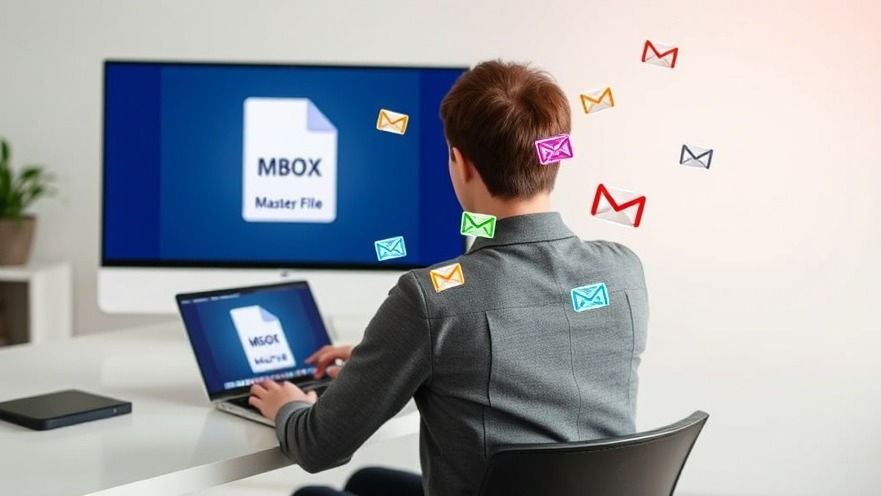
Unlocking the Potential of Your Gmail Data
For digital nomads and remote workers, having access to your essential emails and documents is crucial for seamless productivity. With Gmail being one of the most commonly used email services globally, understanding how to efficiently manage and access your data can significantly enhance your workflow.
Understanding Google Takeout: The Key to Your Gmail Data
Google Takeout is an invaluable tool that allows users to download their data from various Google services, including Gmail. The process is straightforward, ensuring that even those with minimal tech experience can successfully navigate it. To begin, head over to the Google Takeout website and sign in with your Google account. From here, simply deselect all options, scroll down to 'Mail', and check the box. This allows you to download your entire email history, or you can customize your selection by clicking on 'All Mail data included'. Once you've made your choice, continue to the next steps to choose your delivery method and file type, then hit 'Create export'. It's important to note that this process can take some time depending on the amount of data you have. Be patient!
What’s in the MBOX File Format?
After successfully downloading your Gmail data, you'll receive an MBOX file. This file format is widely used for storing collections of messages. However, here is where many may feel a bit lost: what do you do with your MBOX file now? There's a multitude of options to consider, especially for digital nomads who frequently switch devices and email clients.
Importing Your MBOX File: Step-by-Step with Thunderbird
One of the best ways to manage your MBOX file is by using Mozilla Thunderbird, a free and versatile email client. Unlike Microsoft Outlook, Thunderbird supports MBOX natively, making it an excellent choice for importing your downloaded emails. If you haven't already installed Thunderbird, download it first and then follow these simple steps:
Open Thunderbird and click on the hamburger menu in the top right corner.
Select 'Add-ons and Themes' and search for the 'ImportExportTools NG' add-on, then click 'Add to Thunderbird'.
After installing the add-on, restart Thunderbird.
Navigate to 'Tools', select 'ImportExportTools NG', and choose 'Import MBOX file'.
With these steps, you’ll successfully upload your MBOX file, granting you immediate access to all your Gmail content.
Using Alternatives: Different Email Clients
If Thunderbird is not your preferred email client, you might want to consider importing your MBOX file into other applications. For Mac users, the built-in Mail app allows imports through 'File' > 'Import Mailboxes'. Meanwhile, Windows users using Outlook will need to convert the MBOX files to either PST or EML format first, as Outlook does not natively support MBOX files.
Future Savings on Your Digital Workspace
Downloading and managing your Gmail data opens a horizon of possibilities. Beyond simply keeping your emails organized, this process can lead to smarter productivity strategies, especially for those frequently on the go. For instance, having your emails offline means you can access important communication regardless of your internet connection—a key advantage for digital nomads who might find themselves in less connected environments.
A Practical Step Forward for Digital Nomads
As remote work continues becoming the norm, understanding how to control and access your data will only grow in importance. Gmail remains an indispensable tool for communication for many, thus mastering the process of downloading and managing this data gives you a significant edge in your workflow. Don’t wait until you find yourself in a situation needing crucial emails; take advantage of these tools today!
 Add Row
Add Row  Add
Add 




Write A Comment